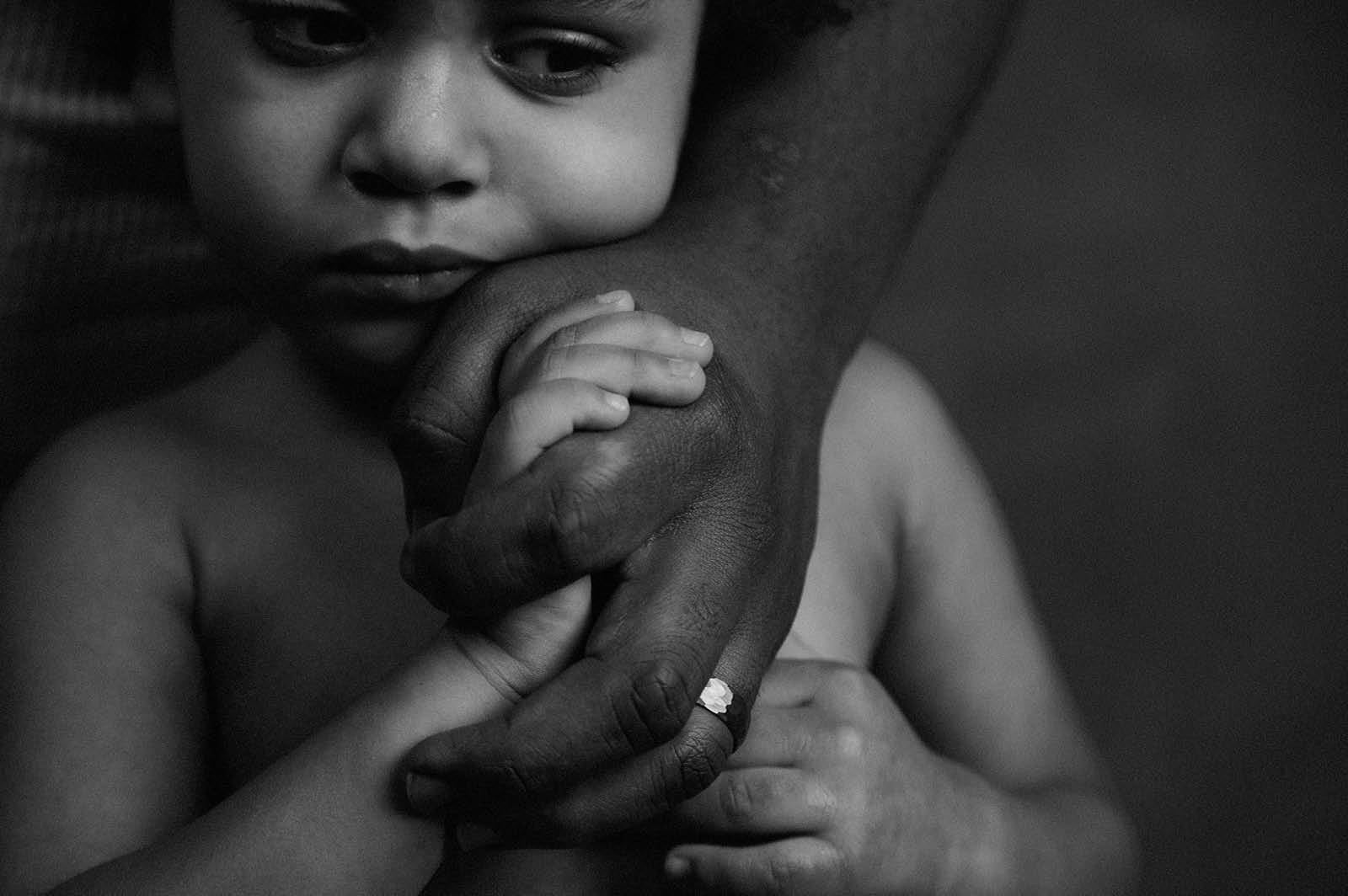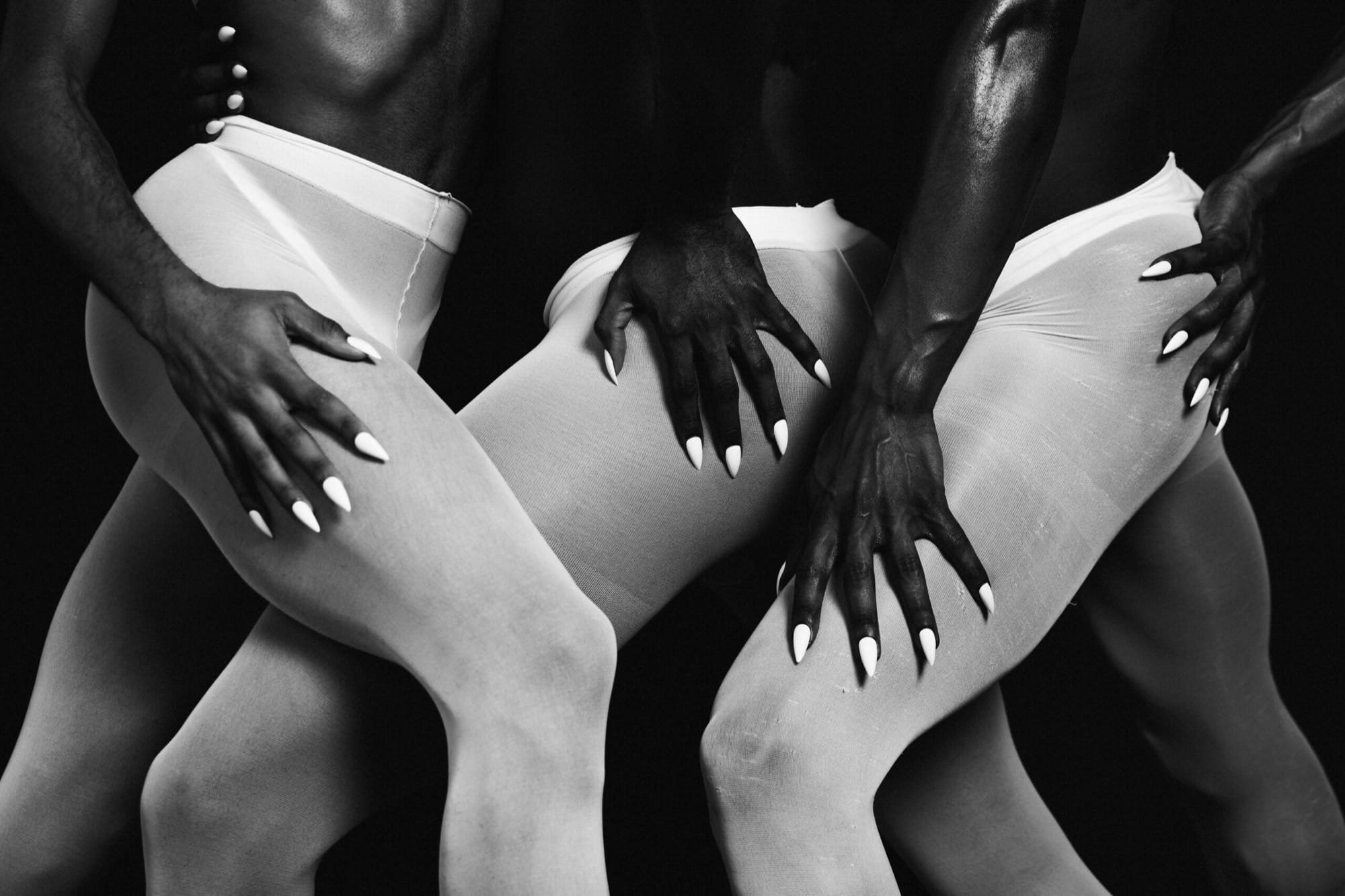In the preface to When I Think About Power, photographer Eric Hart Jr. writes, “Growing up as a queer black man in Southern America, power hid from me. Almost like a game of hide and seek.” When his search led him to photography, he goes on to explain, he began to find his own voice and his own power. The monograph, his first published book, is an expression of that voice. Its pages feature a collection of stylized portraits that explore notions of power as it relates to the Black queer experience. “I wanted to photograph folks who embodied a certain confidence,” he told NeueJournal, “whether that be something I’d witnessed firsthand, with close friends and peers, or that I’ve seen online.” Last month Eric celebrated his book launch at NeueHouse Madison Square. Before he left, we caught up with him to discuss the project’s genesis, the influence of his church upbringing in Macon, and the power of manicured nails.
NEUEJOURNAL
Let’s start at the beginning. When I Think About Power is your first published book of photography, an exploration of the idea of power as it relates to the Black queer experience. How did this project come about?
ERIC HART JR.
So, When I Think About Power started with a poem I randomly wrote one day. The poem was basically a list of all the things that come to mind when I think about the notion of power. I went into my archive of personal work and realized there were a number of shoots that thematically and aesthetically live in the exact world I was imagining for When I Think About Power. So you can say the series started in 2019, since some of those earliest shots in the book date back to then. However, I wrote the poem in 2020, and that’s when I actively started building out this series.

NEUEJOURNAL
Several of the images incorporate religious accessories, like a cross necklace, clergy robes, church hats. Why did you decide to include these religious motifs?
ERIC HART JR.
So much of power was taught to me in the church building. Whether through the way I saw churchgoers carry themselves, or even the way the presence of God was taught to me. The church was a very enlightening experience when it came to the notion of power but also an experience that, at times, made me feel powerless — I was taught that so much of who I am was a mistake, and/or not valid. So just for my own personal growth I needed to take the time to explore the coexistence of both my faith and my sexuality. And doing so has allowed me to find more of my own power.
NEUEJOURNAL
In the introduction to the monograph you discuss your father’s strong sense of self, confidence, and his own power. How does familial influence express itself in this project?
ERIC HART JR.
My family has definitely influenced the work I create. Many of the works are in response to familial experiences; some negative, some positive. My family—and my father specifically—played such a major role in shaping how I looked at myself and who I thought I was supposed to be in this world. [Growing up,] I was always told, “you look like your father.” We share the same name. As a child it’s easy to feel the need to mimic your father and want to be like him. But so much of me wasn’t like him. My interests, my passions, my outlook on things. For so long I had this internal battle, where I felt wrong about who I was because I essentially wasn’t what I knew my father or my family wanted. So these works are grappling with that struggle, and ultimately, rejecting it.


NEUEJOURNAL
Hands and nails are featured prominently in several of the images. What’s the intention behind that focus? You often wear nails yourself — is there an element of self portraiture to these images? What’s the story there?
ERIC HART JR.
The running motif of nails is definitely a form of self portraiture, as I keep my nails done. I love an acrylic set. I also think there is something very powerful about hands. In our society, at least the way I was brought up, a man was seen almost as more masculine or more powerful if he did work with his hands. A man’s hands are supposed to be tough, ready to protect, ready to fix, ready for war, all that. To take these hands and attach this accessory that is so regularly paired with femininity was a way of blurring the lines of how we think of power because the hands still look so strong. The nail shape is so powerful as well. It’s a particular shape that attaches itself to representations of feminine power (on figures like Catwoman, for example).
“A man’s hands are supposed to be tough, ready to protect, ready to fix, ready for war, all that. To take these hands and attach this accessory that is so regularly paired with femininity was a way of blurring the lines of how we think of power because the hands still look so strong.”

NEUEJOURNAL
In the introduction to the series, you write about finding your own voice and power through photography. Art is a form of self-expression, and at the same time, portraits put the spotlight on someone else. How do you see the power dynamic between yourself as the art maker and your subjects?
ERIC HART JR.
Going into a shoot I am very vocal about the world we are playing in, but once we are shooting I don’t necessarily dictate how the subjects choose to play. Of course, I have direction at times and have some specific things I am wanting to try, but I do also allow for so much of the shoot to be open for the subjects’s interpretation. I think there is a good balance.


NEUEJOURNAL
What is your process like during the shoot? How much conceptualizing happens beforehand and which parts, if any, were spontaneous or improvised?
ERIC HART JR.
Shooting is definitely a mix of both conceptualizing and improvisation. So there is a lot of planning involved beforehand—lots of mood boarding and discussions on the ideas and meaning behind the series, so that muses can further understand the overall vision. But when we are actually shooting there is a great deal of collaboration happening. Oftentimes I’m just allowing the subject to do what feels natural and once we find a sweet spot we lean further and further into that.
NEUEJOURNAL
How did you choose the cover image?
ERIC HART JR.
I wanted a cover image that made you think. If you were in a book store walking around and saw it you’d have to pick it up to gain more insight. I think after snapping this image, I just knew it was the one. The cover image embodies that juxtaposition of strength and vulnerability as you see this muscular, stereotypically masculine body crunched in this soft, almost fetal position. He holds this unique umbrella that embodies a certain southern flare because of this antebellum style lace. I also think this image is a direct homage to Rotimi Fani-Kayode’s Umbrella self-portrait, who is a queer artist I love. The image is the amalgamation of everything this book represents.
NEUEJOURNAL
What is the central message you are trying to communicate to people in the Black queer community through this work?
ERIC HART JR.
My overall message is one of strength. I wanted strength to be present in every single frame in this book. Even in conflict or struggle, you will always see the power and hope of a subject. Black queer folks are so resilient, and have been through so many hardships to simply exist on this earth, yet here we are, existing. That takes courage. That takes strength. That takes power. And this series is an embodiment of that.
NEUEJOURNAL
What are you trying to communicate to people who are not a part of that community?
ERIC HART JR.
I think when it comes to folks who can’t relate to the Black queer experience, this work acts as insight to the unknown. Those internal and external battles that many Black queer folks endure from such a young age can be overlooked by outsiders. Hopefully someone who sees this work can find reason to have a little bit more empathy for another.
Apply now to become a NeueHouse Salon member, and get access to our celebrated cultural events, restaurants, and bars, plus 10 working days access per month.




